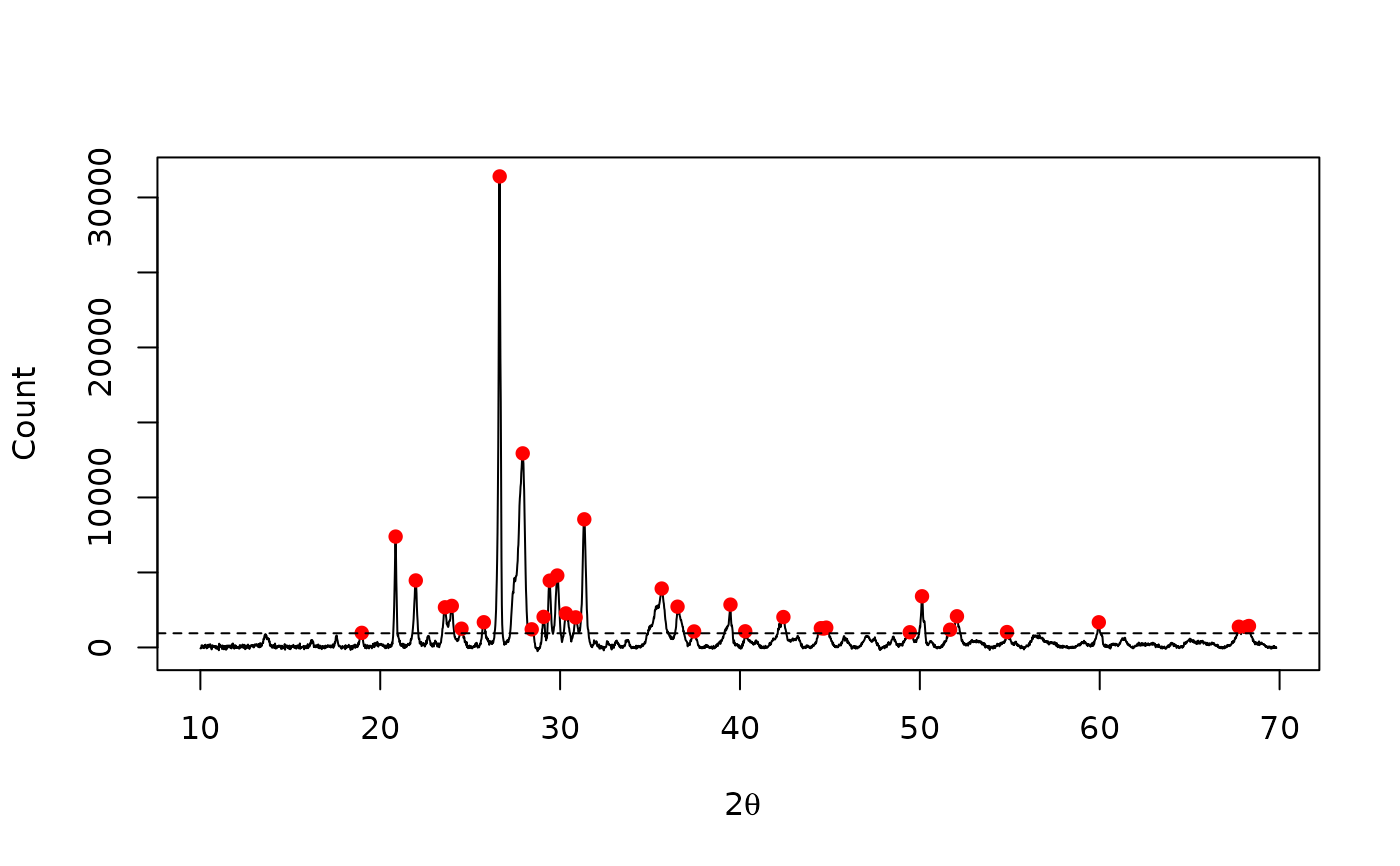Estimates the Half-Width at Half-Maximum (FWHM) for a given peak.
Usage
peaks_fwhm(x, y, ...)
# S4 method for class 'numeric,numeric'
peaks_fwhm(x, y, center)
# S4 method for class 'ANY,missing'
peaks_fwhm(x, center)Arguments
- x, y
A
numericvector. Ifyis missing, an attempt is made to interpretxin a suitable way (seegrDevices::xy.coords()).- ...
Currently not used.
- center
A
numericvalue giving the peak position inxunits.
Value
A numeric value.
See also
Other peaks detection methods:
peaks_find()
Examples
## X-ray diffraction
data("XRD")
## 4S Peak Filling baseline
baseline <- baseline_peakfilling(XRD, n = 10, m = 5, by = 10, sparse = TRUE)
plot(XRD, type = "l", xlab = expression(2*theta), ylab = "Count")
lines(baseline, type = "l", col = "red")
 ## Correct baseline
XRD <- signal_drift(XRD, lag = baseline, subtract = TRUE)
## Find peaks
peaks <- peaks_find(XRD, SNR = 3, m = 11)
plot(XRD, type = "l", xlab = expression(2*theta), ylab = "Count")
lines(peaks, type = "p", pch = 16, col = "red")
abline(h = attr(peaks, "noise"), lty = 2) # noise threshold
## Correct baseline
XRD <- signal_drift(XRD, lag = baseline, subtract = TRUE)
## Find peaks
peaks <- peaks_find(XRD, SNR = 3, m = 11)
plot(XRD, type = "l", xlab = expression(2*theta), ylab = "Count")
lines(peaks, type = "p", pch = 16, col = "red")
abline(h = attr(peaks, "noise"), lty = 2) # noise threshold
 ## Half-Width at Half-Maximum
x <- seq(-4, 4, length = 1000)
y <- dnorm(x)
peaks_fwhm(x, y, center = 0) # Expected: 2 * sqrt(2 * log(2))
#> [1] 2.354354
## Half-Width at Half-Maximum
x <- seq(-4, 4, length = 1000)
y <- dnorm(x)
peaks_fwhm(x, y, center = 0) # Expected: 2 * sqrt(2 * log(2))
#> [1] 2.354354
